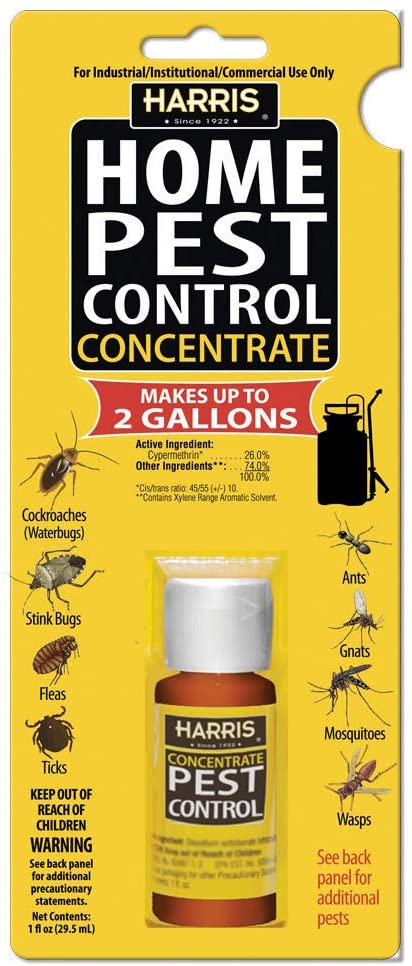Experienced A1 Exterminators Charlotte NC - Fast and Dependable Solutions
Bed Insect Treatment Failure: Contrasting Chemical Vs. Non-Chemical Solutions
In the world of insect control, specifically when managing the relentless problem of bed bugs, the option between chemical and non-chemical therapy options can be a pivotal one. Both strategies supply distinctive benefits and drawbacks, influencing elements such as effectiveness, security factors to consider, and general cost. By analyzing the nuanced details of each method, a more clear understanding of which course to pursue in dealing with a bed bug problem can be achieved.
Effectiveness of Chemical Treatments
Chemical therapies for bed pest problems have been extensively recognized for their potent and fast effectiveness in removing these pests. When thinking about the effectiveness of chemical therapies, it is vital to comprehend that they can supply a quick and comprehensive option to a bed pest issue. Specialist pest control experts frequently depend on pesticides to target bed insects at numerous stages of their life cycle, including fairies, grownups, and eggs. These chemicals usually function by interfering with the bed insects' anxious system, resulting in paralysis and eventual death.
Moreover, chemical treatments have the benefit of offering recurring effects, meaning that they can proceed to get rid of bed bugs even after the preliminary application. This recurring action is especially valuable in combating any prospective re-infestations. Furthermore, the rapid activity of chemical treatments can bring alleviation to people dealing with serious bed insect infestations, allowing them to gain back control of their space rapidly.
Safety Interest In Chemical Solutions
When making use of chemical options for bed pest therapy is ensuring the safety of residents and the atmosphere,One vital facet that calls for mindful consideration. While chemical treatments can be reliable in eradicating bed insects, they may position dangers if not managed effectively. Among the main security interest in chemical options is the possible damage they can trigger to human health. Direct exposure to specific chemicals used in bed bug therapies can bring about respiratory system issues, skin irritation, or various other negative reactions, particularly in people with pre-existing conditions or level of sensitivities. In addition, incorrect application or dosage of chemical pesticides can lead to harmful deposits remaining in the cured area, posing long-lasting wellness dangers to occupants.
Additionally, the ecological impact of chemical options is another substantial consideration. Some chemicals used in bed insect treatments might be hazardous to valuable insects, wildlife, and environments if they leach into the dirt or water supply. It is vital to utilize chemical therapies judiciously, complying with safety and security standards, and taking into consideration much less hazardous options to reduce these risks and make sure the efficient and risk-free monitoring of bed pest infestations.
Benefits of Non-Chemical Methods
Considering the potential security worries and ecological cockroach terminator effect linked with chemical solutions for bed bug treatment, exploring non-chemical strategies presents an appealing option with a number of unique benefits. Non-chemical methods offer a safer choice for houses, especially those with people, kids, or animals conscious harsh chemicals. These approaches eliminate the dangers of exposure to poisonous substances, reducing the capacity for adverse health and wellness impacts. Additionally, non-chemical treatments are eco-friendly, as they do not contribute to air or water pollution, making them a lasting option for insect control.
Furthermore, non-chemical solutions can be efficient in targeting bed pests, including hard-to-reach areas where chemical treatments may not permeate - A1 charlotte bed bug exterminator. Approaches such as heat treatment, vacuuming, vapor cleansing, and cushion coverings provide complete removal without the use of damaging chemicals.
Limitations of Non-Chemical Treatments

Additionally, non-chemical therapies often require several applications to attain successful elimination. This can be time-consuming and may not always assure official site full elimination of all bed bugs and their eggs, especially in hard-to-reach or surprise places.
Moreover, the success of non-chemical therapies heavily depends on correct execution and thoroughness, which can be testing for individuals without professional experience. Inadequate application of non-chemical methods may lead to incomplete elimination, bring about relentless problems and the demand for additional therapies.
Therefore, while non-chemical treatments have their advantages, it is necessary to recognize these constraints and consider them when determining the most efficient technique for managing bed insect problems.
Cost Contrast: Chemical Vs. Non-Chemical Options
Offered the limitations linked with non-chemical treatments, an important facet to evaluate pest pest control in the context of bed insect management is the expense comparison in between chemical and non-chemical options. In comparison, non-chemical treatments like warmth therapy or steam can be much more expensive, with costs varying from $1,000 to $6,000 for an entire home. While the first price of chemical therapies might seem lower, numerous therapies may be called for to completely get rid of the infestation, possibly increasing the general cost.
Final Thought

Thinking about the possible safety issues and ecological influence associated with chemical options for bed pest treatment, checking out non-chemical strategies presents an encouraging alternative with a number of distinctive advantages.Given the limitations connected with non-chemical therapies, an important element to review in the context of bed bug administration is the price contrast between chemical and non-chemical options. In comparison, non-chemical therapies like warmth treatment or steam can be much more costly, with prices ranging from $1,000 to $6,000 for an entire home. While the preliminary price of chemical therapies may appear reduced, numerous therapies may be required to completely get rid of the invasion, possibly increasing the total cost.In conclusion, when comparing chemical and non-chemical bed insect treatment options, it is important to think about performance, safety, benefits, limitations, and cost.